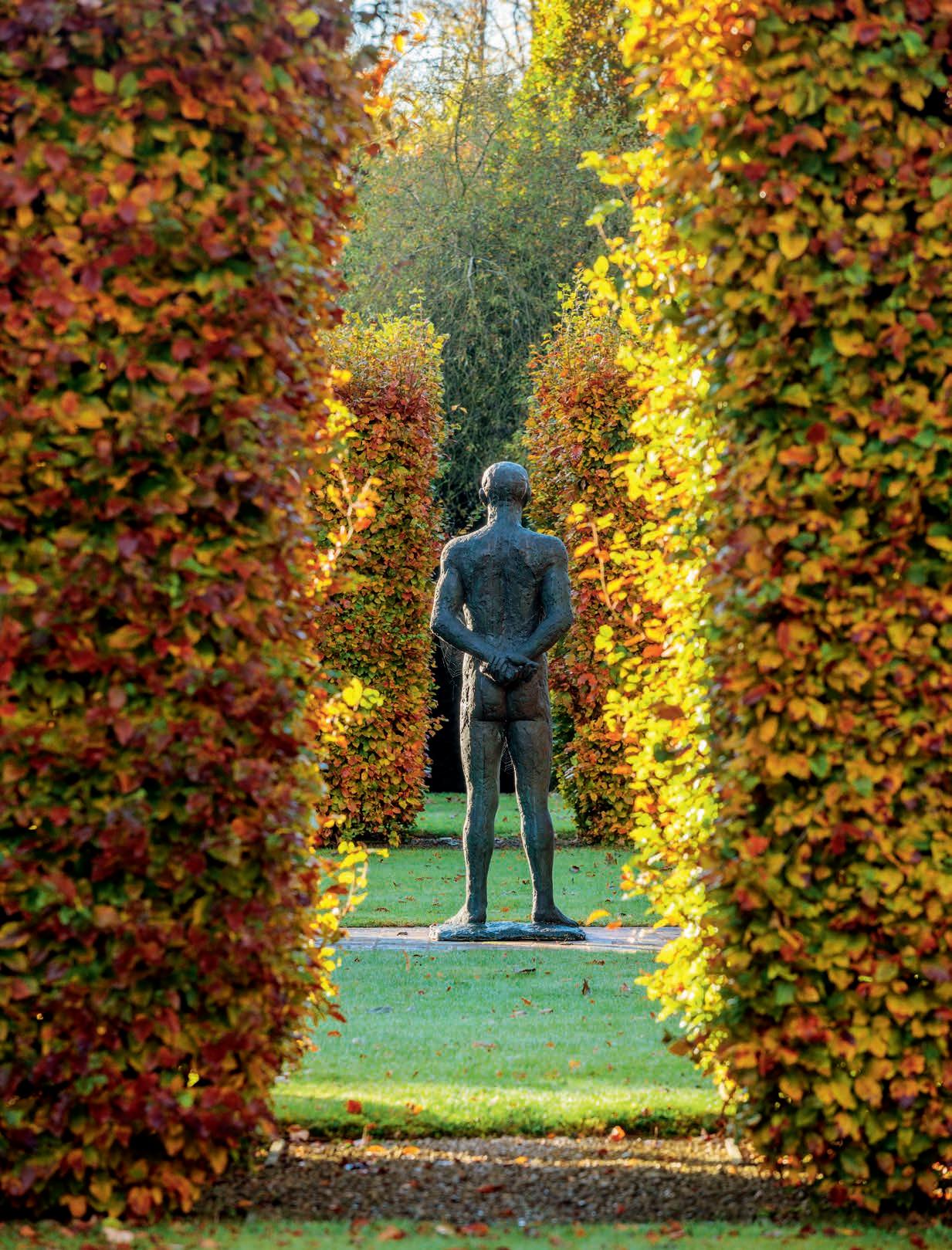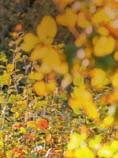














































































































































After its lavish redesign, the garden at Quinton Old Rectory in Northamptonshire was simply too good for Emma Wise and Alan Kennedy to keep to themselves. Currently ablaze with dazzling autumn colour, this idyllic multifaceted space is now shared to reflect the couple’s ethos of promoting a positive mindset and improving mental health



















A vast sea of flu y miscanthus, viewed from the house over the vivid autumn leaves of umbrella plane trees, Platanus x hispanica











Jenny Parsons is a gardener who enjoys a good laugh. The roughly sketched map of her five-acre garden in East Devon handed to visitors on open days includes areas named ‘Nomansland’, ‘Back of Beyond’, and a bed labelled ‘Lost Sock’ where Wagtail the Jack Russell terrier once buried a Merino wool sock. But as well as being a lot of fun, this exuberant garden is chock full of plants, from the commonplace to the rare, as Jenny’s spreadsheet of over 1,000 entries testifies – something she jokingly refers to as “an external hard drive for my dwindling brain. And if I didn’t like a plant there’s likely to be a sniping comment next to it!”
Jenny and her partner, Matt Boyd, moved to Regency House, a large former rectory surrounded by 30 acres of land on the edge of the village of Hemyock in the Blackdown Hills, in 1990. “We had six children between us and needed a house large enough for us all.” Despite its name, the rectory is mid-Victorian, having been built in 1855. When the family moved in, the garden was “an overgrown jungle of ash, oak and holly with laurels so large they were almost growing in through the windows”. Though close to the centre of the village, Regency House seems like “a little island sanctuary”, situated
Above The garden slopes away from the handsome former rectory, which takes in a view of a large plant-fringed pond, and the fields beyond.
at the end of a long drive that crosses a small ford. “If the valley floods, we can be completely cut off, but the water comes and goes quickly,” says Jenny.
Growing up in the Mendips in Somerset, Jenny absorbed a talent for raising plants from her parents who ran a market garden: “I used to grow things and sell them back to my mum and dad who also had a small guesthouse.” Taking on the renovation of a large, neglected garden spurred Jenny to enrol on a course in horticulture at nearby Bicton College where she learnt everything from how to lay paving to identifying weed seedlings.
“My ambition was to make a garden full of trees and flowering shrubs for year-round interest rather than one that peaked in a short-lived explosion, so I wanted to learn about soil, how to take cuttings properly and the specific needs of different types of plant,” she recalls. Agapanthus specialist Dick Fulcher was head gardener at Bicton at the time, and Jenny found him “inspirational”. Other influences included Christopher Lloyd’s columns in Country Life and visits to Stone Lane Gardens on the edge of Dartmoor, where Kenneth and June Ashburner amassed a fine collection of birches and alders.
Although overgrown, the sloping garden around Regency House had a few spectacular old trees,



Top A specimen acer displays its crimson autumn garb; beyond are the fields where owners Jenny and Matt keep Dexter cattle.
Above A row of squash ripens on a sunny wall.
Left Moss-covered paths through the brick and flint walled garden.
In the glorious autumnal gardens of Attadale House, layered vistas are the order of the day as sweeping areas of planting and Highland scenery combine with the most spectacular effects





Neither pictures nor words can adequately capture the spirit that for several centuries now has pervaded Minterne Gardens, filling the ancient wooded valley with a feeling of absolute peace, silent save for birdsong, cascading water and the scrunching of fallen leaves underfoot.
“The first whispering days of autumn coolness in the Cerne Valley bring with them a shimmering wash of leaves, and clear, bright mornings,” says Lord Henry Digby, whose family have owned the Minterne Estate for 250 years.
With the unfolding of autumn, Minterne is not only hard to beat for its stunning array of colours from berries, barks and leaves, but also for seasonal smells such as the delicious toffee fragrance of the katsura tree. However, it is a collection of glorious mature acers that light up the woodland. “On the island above Eleanor’s Bridge, Acer cappadocicum provides autumnal reflections in the water – we may be biased, but we nevertheless think that the colour and shape is near perfection,” Henry observes.
Minterne is an 18th-century, 27-acre landscape garden filled with the sounds of water and magnificent specimen trees that cast dappled shadows on a collection of rare plants. Minterne
Above Colourful Japanese maples are dotted around Minterne, having been planted from seedlings found in the gardens’ greenhouse after World War II.
House stands at the heart of the garden, having been reconstructed in the 19th century in its original 17th-century form. Henry has fond memories of growing up here, often frequenting the mile-long, horseshoe-shaped path that meanders through the valley. “As a child, I’d take my bike round the paths, and then as I grew up it was a go-cart or motorbike,” Henry recalls. “Back then, I had absolutely no interest in the flowers, and if we crashed into the odd rhododendron, it seemed to survive!”
Nowadays, Henry still regularly follows the path that winds through gardens designed in the manner of ‘Capability’ Brown, but only on foot. He is also as passionate about the gardens as his ancestors. “My father returned from World War II to find about 200 acer seedlings in the greenhouse and planted them round the garden in small groves,” he explains. Now at their peak, these Japanese acers are brought into sharp focus along a newly created path, the Dawn Redwood Walk. “Now you can stroll among the acers, rather than standing back and viewing them from a distance,” Henry explains.
The main pathway starts and ends at a tea terrace that overlooks a lake and the smooth, undulating lawns by Minterne House before descending steeply to the River Cerne as it tumbles over several




























Selecting a piece of outdoor sculpture is a considered and personal process. Here, experts offer advice on choosing and positioning works and ensuring you have the right material, lighting and scale




